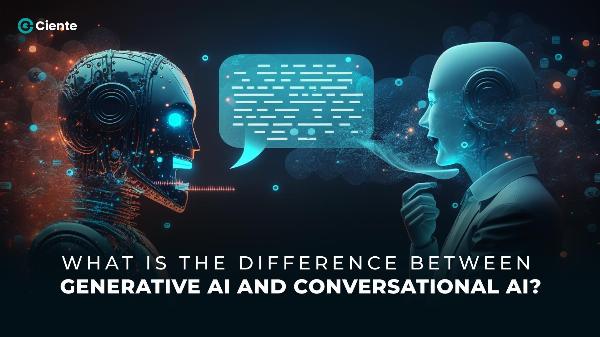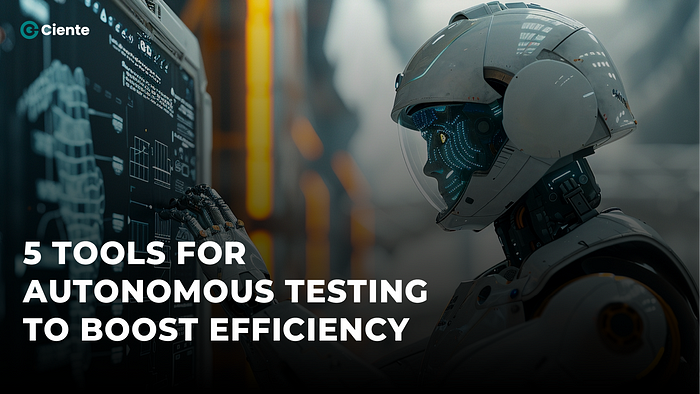What Is The Difference Between Generative AI And Conversational AI?

Strong 8k brings an ultra-HD IPTV experience to your living room and your pocket.
In the vast landscape of artificial intelligence, two terms that often surface are “Generative AI” and “Conversational AI.” While both fall under the broader umbrella of AI, they serve distinct purposes and utilize different methodologies. In this blog, we’ll delve into the definitions of Generative AI and Conversational AI, exploring their unique characteristics, applications, and differences.
Generative AI
Generative AI is a branch of artificial intelligence focused on creating content autonomously. Unlike traditional AI models that rely on predefined patterns and rules, generative models have the ability to generate new, original content based on the patterns they learn from vast datasets. One of the most prominent examples of generative AI is the Generative Pre-trained Transformer (GPT) models, such as GPT-3.5.
These models, trained on diverse datasets, can generate human-like text, images, and even code. The underlying principle is to enable the AI to understand and replicate the patterns it encounters during training, allowing it to generate contextually relevant and coherent content.
Conversational AI
Conversational AI, on the other hand, is centered around enabling machines to engage in meaningful conversations with users. This involves natural language processing (NLP) and machine learning techniques to comprehend and respond to user inputs in a conversational manner. Chatbots and virtual assistants are common applications of conversational AI.
The primary goal of conversational AI is to facilitate seamless interactions between humans and machines, providing information, answering queries, and performing tasks through conversation. These systems often leverage machine learning algorithms to improve their understanding of context, user preferences, and language nuances over time.
Difference between Generative AI and Conversational AI
1. Objective and Purpose
Generative AI: The primary objective of Generative AI is to autonomously generate new and contextually relevant content. It learns patterns from large datasets during training and then uses that knowledge to create original outputs, such as text, images, or even music. It’s often employed in creative applications and content generation tasks.
Conversational AI: Conversational AI, on the other hand, focuses on facilitating natural and meaningful interactions between machines and humans through conversation. It is geared towards understanding user inputs, processing natural language, and providing coherent responses. Conversational AI finds applications in chatbots, virtual assistants, and customer support systems.
The output of Generative AI is typically the generation of new content. The output of Generative AI is typically the generation of new content.
Generative AI: The output of Generative AI is typically the generation of new content. For example, a Generative AI language model like GPT-3 can produce paragraphs of text, articles, or even poetry. The emphasis is on creativity and the ability to generate content that is contextually relevant and coherent.
Conversational AI: The output of Conversational AI is conversational in nature. It involves understanding user queries or statements and responding in a manner that is contextually appropriate. The focus is on maintaining a coherent dialogue, providing information, and potentially performing tasks based on user requests.
3. Applications
Generative AI: Applications of Generative AI are diverse and span creative fields. It can be used for content creation, text summarization, and even in coding environments for generating code snippets. Additionally, it has applications in artistic endeavors, such as generating artwork or music compositions.
Conversational AI: Conversational AI is commonly used in applications where natural language interaction is essential. This includes chatbots for customer support, virtual assistants like Siri or Google Assistant, and automated messaging systems. It plays a crucial role in enhancing user experience by providing effective communication between users and machines.
4. Training Data and Learning Approach
Generative AI: Generative AI models are trained on diverse datasets that expose them to a wide range of patterns and contexts. The training involves learning the statistical relationships within the data, enabling the model to generate content that aligns with the learned patterns.
Conversational AI: Conversational AI models are trained on datasets containing examples of human conversations. They employ natural language processing techniques to understand the nuances of language, context, and user intent. The training involves optimizing the model to respond appropriately to various inputs in a conversational context.
In essence, Generative AI is about content creation and creativity, while Conversational AI is about enabling machines to engage in natural and coherent conversations with users. Both have distinct applications and contribute to the broader field of artificial intelligence in unique ways. As these technologies advance, their integration into various domains continues to shape the landscape of human-machine interaction.
Conclusion
While both Generative AI and Conversational AI are integral parts of the artificial intelligence landscape, they serve distinct purposes. Generative AI focuses on autonomous content creation, producing novel outputs based on learned patterns, while Conversational AI aims to facilitate natural and meaningful interactions between humans and machines through conversation. As AI continues to advance, understanding these nuances becomes crucial for harnessing the full potential of these technologies in various domains.
AUTHOURS BIO:
With Ciente, business leaders stay abreast of tech news and market insights that help them level up now,
Technology spending is increasing, but so is buyer’s remorse. We are here to change that. Founded on truth, accuracy, and tech prowess, Ciente is your go-to periodical for effective decision-making.
Our comprehensive editorial coverage, market analysis, and tech insights empower you to make smarter decisions to fuel growth and innovation across your enterprise.
Let us help you navigate the rapidly evolving world of technology and turn it to your advantage.
Note: IndiBlogHub features both user-submitted and editorial content. We do not verify third-party contributions. Read our Disclaimer and Privacy Policyfor details.







